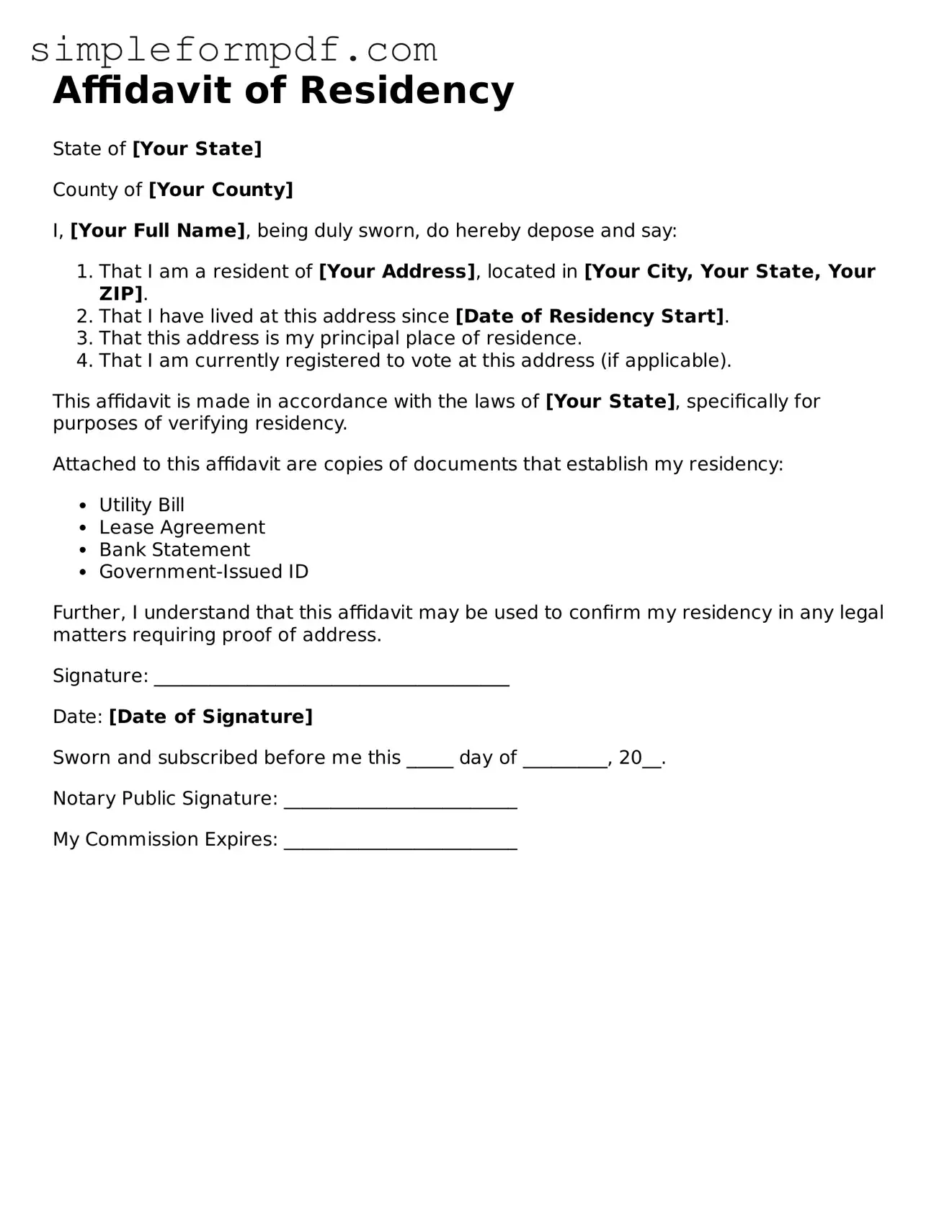Affidavit of Residency
State of [Your State]
County of [Your County]
I, [Your Full Name], being duly sworn, do hereby depose and say:
- That I am a resident of [Your Address], located in [Your City, Your State, Your ZIP].
- That I have lived at this address since [Date of Residency Start].
- That this address is my principal place of residence.
- That I am currently registered to vote at this address (if applicable).
This affidavit is made in accordance with the laws of [Your State], specifically for purposes of verifying residency.
Attached to this affidavit are copies of documents that establish my residency:
- Utility Bill
- Lease Agreement
- Bank Statement
- Government-Issued ID
Further, I understand that this affidavit may be used to confirm my residency in any legal matters requiring proof of address.
Signature: ______________________________________
Date: [Date of Signature]
Sworn and subscribed before me this _____ day of _________, 20__.
Notary Public Signature: _________________________
My Commission Expires: _________________________
